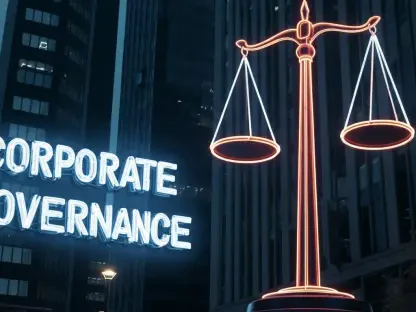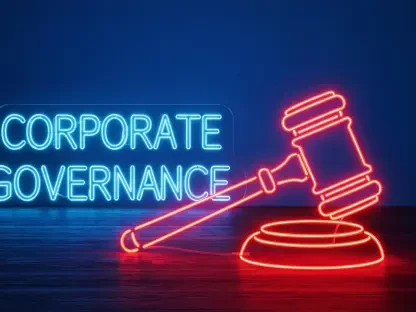Overview of a Shifting Immigration Landscape
Imagine a scenario where the United States, long a beacon for global talent, suddenly imposes a financial barrier so steep that it risks alienating the very individuals driving innovation in technology and healthcare. This is the reality facing the H-1B visa program, a cornerstone of American industry, with the recent proclamation by President Donald Trump to levy a one-time $100,000 fee on visa holders. Announced on September 19, this policy has sent shockwaves through corporate boardrooms and legal circles alike, raising questions about its legality and impact on the nation’s economic competitiveness. As industries grapple with an ever-changing regulatory environment, the stakes have never been higher for understanding how this drastic measure could reshape the landscape for highly skilled foreign workers.
The H-1B visa program has been instrumental in filling critical skill gaps within the U.S. workforce, particularly in sectors reliant on specialized expertise. With this new fee, the balance between protecting domestic jobs and maintaining a pipeline of international talent is under intense scrutiny. This report delves into the intricacies of the policy, examining its legal foundations, economic ramifications, and the potential for litigation that could redefine immigration norms. The discussion ahead aims to provide a comprehensive analysis for stakeholders navigating these turbulent waters.
Understanding the H-1B Visa Program and Trump’s New Policy
The H-1B visa program, established under the Immigration and Nationality Act, allows U.S. employers to hire foreign workers in specialty occupations that require theoretical or technical expertise, such as engineering, medicine, and computer science. This initiative plays a pivotal role in the U.S. economy by addressing labor shortages in high-demand fields, enabling companies to remain competitive on a global scale. Each year, thousands of professionals contribute to innovation and growth, often becoming integral to the fabric of American industry.
For American businesses, particularly in technology and healthcare, the program is a lifeline for accessing talent that is not readily available domestically. It supports a dynamic workforce that fuels research, development, and critical services, ensuring that the nation remains at the forefront of global advancements. However, the recent proclamation by President Trump on September 19 introduces a significant hurdle: a one-time $100,000 fee imposed on H-1B visa holders, fundamentally altering the cost-benefit equation for both employers and employees.
The rationale behind this fee centers on protecting American workers, with the administration citing concerns over wage suppression and job displacement caused by foreign labor. Proponents argue that the substantial cost will deter companies from over-relying on H-1B workers, thereby prioritizing domestic hiring. This policy shift has ignited a fierce debate about whether such a financial barrier aligns with the program’s original intent or if it risks undermining the very industries it seeks to support.
Legal Basis and Immediate Reactions to the Fee
Questionable Authority Under the Immigration and Nationality Act (INA)
The legal foundation for the $100,000 H-1B fee rests on two provisions of the Immigration and Nationality Act cited by the Trump administration: the authority to regulate the entry and exit of foreigners and the power to impose restrictions based on national interest. While these provisions have historically underpinned measures like travel bans, their application to a monetary fee is uncharted territory. Legal scholars argue that a one-time charge does not neatly fit within the scope of entry regulations, as it lacks a clear connection to border control mechanisms.
Critics, including prominent immigration lawyers, contend that this interpretation stretches the INA beyond its intended limits. Past uses of these authorities have focused on categorical restrictions or procedural rules, not financial impositions, raising doubts about consistency with established precedent. The American Immigration Lawyers Association (AILA) has been vocal in its critique, asserting that the fee represents an overreach of executive power, disconnected from the legislative framework that governs visa programs.
Specific objections highlight the lack of congressional approval for such a substantial fee, which appears to sidestep the structured fee system already in place for H-1B petitions. Experts suggest that this deviation could render the policy vulnerable to legal challenges, as it bypasses the checks and balances typically required for immigration-related fiscal measures. The uncertainty surrounding the INA’s applicability has set the stage for a contentious battle in the courts.
Predictions of Swift Legal Challenges
With the fee’s announcement, immigration advocates and legal experts have predicted an immediate wave of lawsuits challenging its legitimacy. The scale of impact is evident from U.S. Citizenship and Immigration Services data for the current fiscal year, which shows over 141,000 H-1B petitions approved for initial employment, with a significant portion involving individuals already residing in the U.S. This large affected population underscores the urgency and potential scope of litigation that could arise from the policy’s enforcement.
Particularly vulnerable are visa holders transitioning from student status to H-1B, a group that often relies on this pathway to build careers in the U.S. Legal arguments against the fee emphasize its arbitrary nature, especially for those already within the country, as it imposes a retroactive financial burden without clear justification. Such application, critics argue, violates principles of fairness embedded in immigration law, paving the way for targeted lawsuits.
The consensus among legal professionals is that the government faces an uphill battle in defending this policy. Given the apparent conflict with existing statutes, many anticipate that courts will scrutinize the fee’s alignment with legislative intent, potentially leading to injunctions or outright invalidation. As preparations for legal action intensify, the coming months are likely to be defined by high-stakes courtroom confrontations.
Economic and Policy Implications of the H-1B Fee
The introduction of a $100,000 fee for H-1B visa holders poses a direct threat to U.S. innovation and global competitiveness, according to industry leaders. By creating a prohibitive cost barrier, the policy could discourage the influx of highly skilled workers who drive advancements in critical sectors like artificial intelligence, biotechnology, and medical research. The resulting talent gap might hinder companies from maintaining their edge in a fiercely competitive international market.
This measure also exacerbates the tension between the administration’s aim to safeguard American jobs and the reality that many roles filled by H-1B workers lack sufficient domestic candidates. Critics argue that deterring global talent does not automatically translate to increased opportunities for U.S. workers if the necessary skills are absent locally. Instead, it risks stunting growth in industries that rely heavily on foreign expertise, potentially leading to reduced investment and slower economic progress.
Supporters of economic protectionism view the fee as a necessary step to prioritize domestic labor, while immigration advocates warn of long-term damage to the nation’s reputation as a hub for the world’s brightest minds. The technology and healthcare sectors, in particular, face operational challenges if the policy curtails their ability to recruit essential personnel. This dichotomy reflects a broader policy debate about how to balance national interests with the undeniable benefits of a diverse, skilled workforce.
Navigating the Regulatory and Legal Landscape
Current regulations for H-1B petitions include statutory fees mandated by Congress, such as application costs and fraud prevention charges, designed to fund program administration and oversight. These established fees are structured to ensure transparency and accountability, reflecting a legislative consensus on the financial framework for visa processing. Trump’s newly imposed $100,000 fee, however, appears to operate outside this system, raising significant questions about presidential authority to unilaterally alter fiscal requirements.
The apparent conflict with existing regulations fuels arguments of executive overreach, as the fee lacks the legislative backing that characterizes other H-1B costs. Legal experts point out that such a substantial financial imposition, absent congressional approval, may not withstand judicial scrutiny, especially given the structured nature of immigration fee-setting. This discrepancy forms a core component of anticipated legal challenges, with plaintiffs likely to argue that the policy undermines statutory intent.
Looking at past applications of INA authorities, such as travel bans and entry restrictions, provides context for evaluating the fee’s legal viability. While those measures survived certain challenges, they were grounded in specific security or procedural rationales, unlike the economic focus of the current fee. The likelihood of the government losing lawsuits remains high, as courts may view this policy as a departure from precedent, potentially setting a significant benchmark for future executive actions in immigration policy.
Future Outlook for H-1B Policies and Immigration Reform
Should the $100,000 fee survive legal scrutiny, its long-term effects on U.S. immigration policy could be profound, fundamentally altering how foreign talent engages with the American job market. Companies may face increased pressure to rethink recruitment strategies, potentially shifting toward domestic hiring or offshore operations to mitigate costs. Such a pivot could reshape workforce demographics in key industries over the coming years, with ripple effects on innovation cycles.
The financial barrier might also prompt a reevaluation of how businesses retain international employees, possibly leading to alternative visa categories or sponsorship models to bypass the H-1B program’s constraints. This adaptation, while innovative, could introduce new complexities and costs, further straining corporate budgets. The evolving corporate response will likely influence broader immigration reform discussions, as stakeholders seek sustainable solutions to talent acquisition challenges.
Debates on balancing national interest with global competitiveness are gaining momentum, with policymakers urged to consider frameworks that protect domestic workers without sacrificing economic vitality. Political shifts, public sentiment, and economic conditions will undoubtedly shape H-1B regulations in the near term, potentially leading to comprehensive legislative changes. As these dynamics unfold, the intersection of immigration and economic policy remains a critical area for ongoing analysis and advocacy.
Reflecting on a Contentious Policy Shift
Looking back, the discourse surrounding the $100,000 H-1B fee revealed deep divisions over the role of foreign talent in the U.S. economy, with legal and economic arguments dominating the conversation. The policy’s questionable alignment with existing immigration law underscored a pivotal moment of contention, as stakeholders grappled with its implications for industry and national identity. Each facet of the debate, from courtroom battles to corporate adjustments, painted a picture of a nation at a crossroads.
Moving forward, a proactive approach demands close monitoring of litigation outcomes, as judicial rulings could establish critical precedents for executive power in immigration matters. Industry leaders should prepare contingency plans, exploring diverse talent pipelines while advocating for balanced reforms that preserve competitiveness. Policymakers, meanwhile, must prioritize dialogue that bridges protectionist goals with the undeniable value of global expertise, ensuring that future policies strengthen rather than strain the economic fabric.









